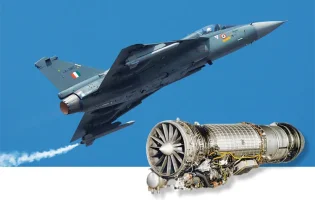- Views: 125
- Replies: 1
A significant online movement, identified by the hashtag #FundKaveriEngine, has gained major traction across India, reaching the top of trending topics on the social media platform X.
As of May 27, 2025, the campaign, which advocates for increased and sustained financial backing for India's indigenous Kaveri aero-engine program, has drawn widespread attention.
Thousands of posts from defence enthusiasts, analysts, and the general public underscore a collective call to prioritise this critical project, emphasising its strategic importance for developing homegrown engines for the nation's fighter aircraft and unmanned aerial vehicles (UAVs).
The Kaveri engine initiative, spearheaded by the Gas Turbine Research Establishment (GTRE) in Bengaluru, an institution under the Defence Research and Development Organisation (DRDO), has been a long-standing and complex undertaking since its official launch in 1989.
Originally envisioned to power the Light Combat Aircraft (LCA) Tejas, the program encountered significant technical hurdles, primarily related to achieving the required thrust (the force that propels an aircraft forward) and managing the engine's overall weight. These challenges eventually led to the decision in 2008 to no longer designate the Kaveri as the primary engine for the Tejas.
However, recent advancements have renewed optimism. Notably, a derivative version, the Kaveri Derivative Engine (KDE), successfully demonstrated a dry thrust of 46-49 kilonewtons (kN) and received clearance for in-flight testing in 2024, signalling renewed potential for the indigenous design.
The current wave of public support for the #FundKaveriEngine campaign appears to have been significantly boosted by a recent announcement from Defence Minister Rajnath Singh.
On April 30, 2025, the Minister declared enhanced government funding aimed at accelerating the Kaveri program. This includes support for the Kaveri Derivative Engine, slated for the Ghatak stealth unmanned combat aerial vehicle, and the proposed Kaveri 2.0 engine, which targets a more powerful 90kN of thrust.
Social media posts, such as one from the X account @IndiaWarMonitor, highlighted that the hashtag trended for several hours, securing the number one position in India with fewer than 40,000 posts, indicating a strong organic interest. Users like @Warlock_Shubh and @irrationalkidd stressed that broader public engagement could elevate the campaign's visibility among policymakers, urging influential X accounts to amplify the message.
This online advocacy reflects a growing public desire to see India achieve self-sufficiency in critical defence technologies and reduce its dependence on foreign-supplied engines.
Currently, aircraft like the Tejas utilise imported engines, such as the GE F404 and F414 from the United States. This reliance can subject India to geopolitical pressures and export control regimes, which can restrict or delay access to essential technology and spares.
X users, including @FinestYew, voiced concerns over previous decisions that may have limited funding for the Kaveri program, arguing that such moves have potentially impeded India's progress in aerospace capabilities and deepened its reliance on international suppliers.
This sentiment was shared by @alpha_defense, which pointed out that the Kaveri engine had achieved 73kN of thrust with its afterburner, despite operating with limited infrastructure, highlighting the project's inherent capabilities and the need for consistent investment.
The timing of the #FundKaveriEngine trend is particularly noteworthy, aligning with a period of heightened regional security concerns and recent successes by India in neutralising threats such as drones and rockets from across the border, reportedly using systems like the indigenous Akash and the Indo-Israeli MR-SAM air defence systems.
Furthermore, the DRDO's ongoing efforts to upgrade the Akash missile system with more advanced propulsion fuels illustrate India's continued commitment to enhancing its indigenous defence arsenal.
A fully developed and operational Kaveri engine could potentially power future versions of the Tejas fighter jet and the strategically important Ghatak UCAV. This would significantly lessen India's reliance on imported defence technology, bolster national security, and represent a major step towards true self-reliance in the critical aerospace sector.








